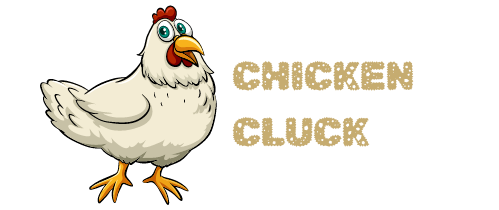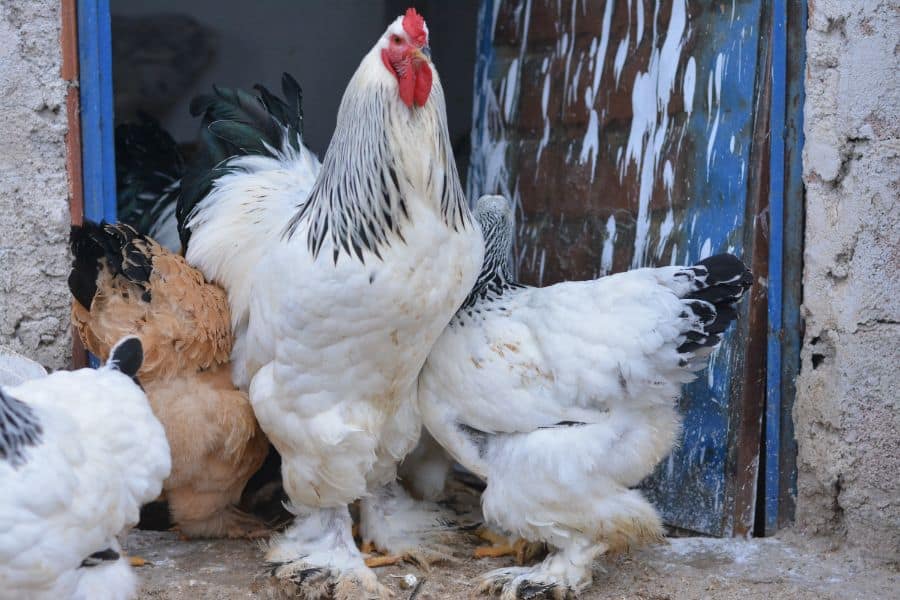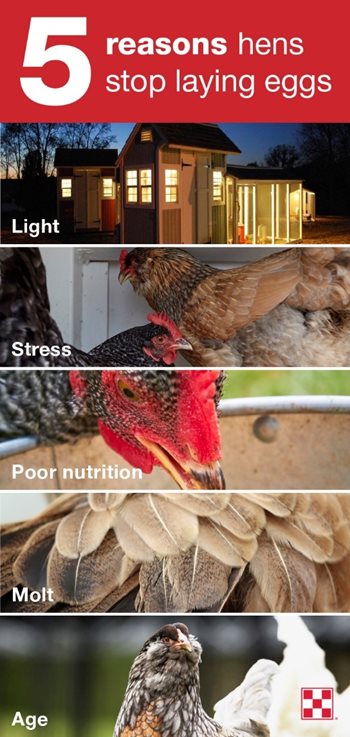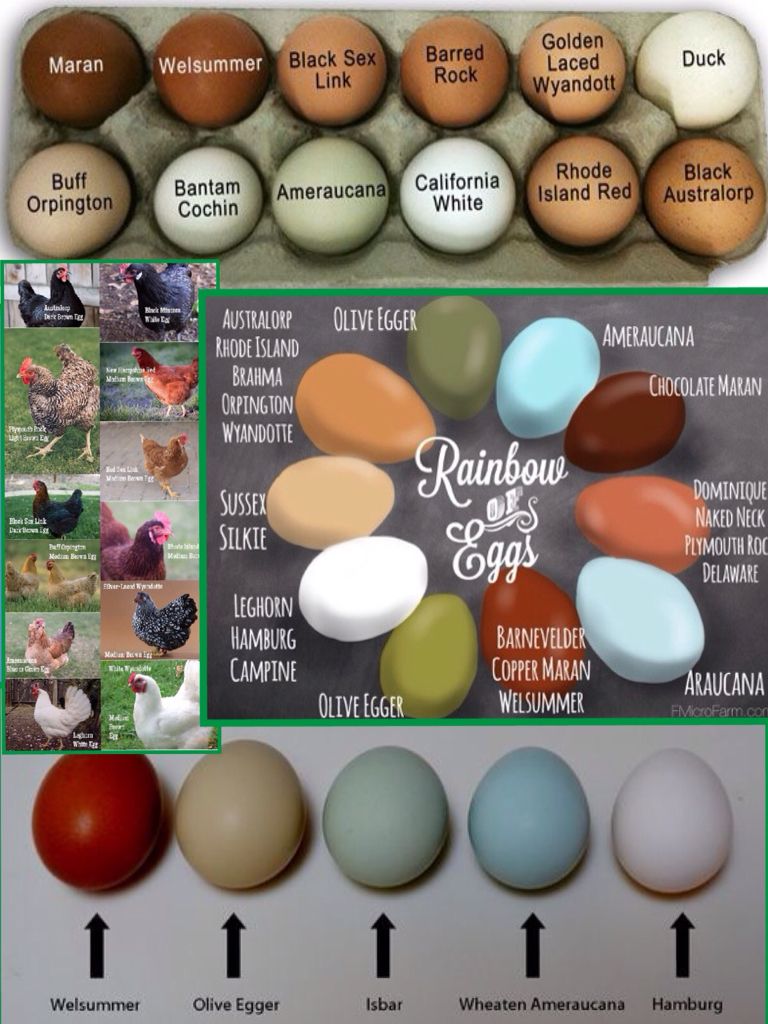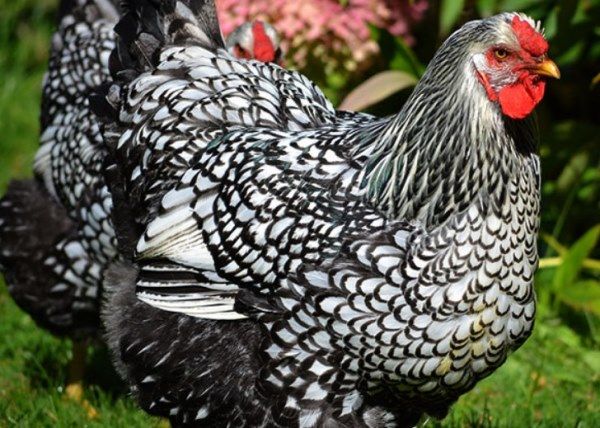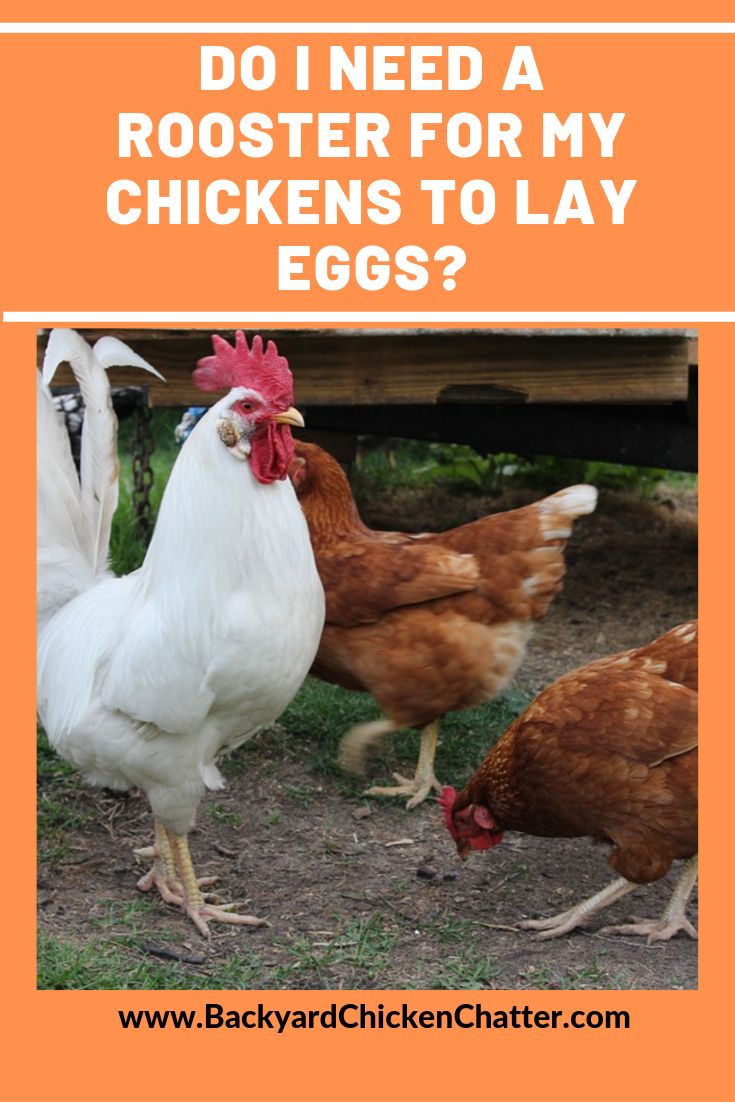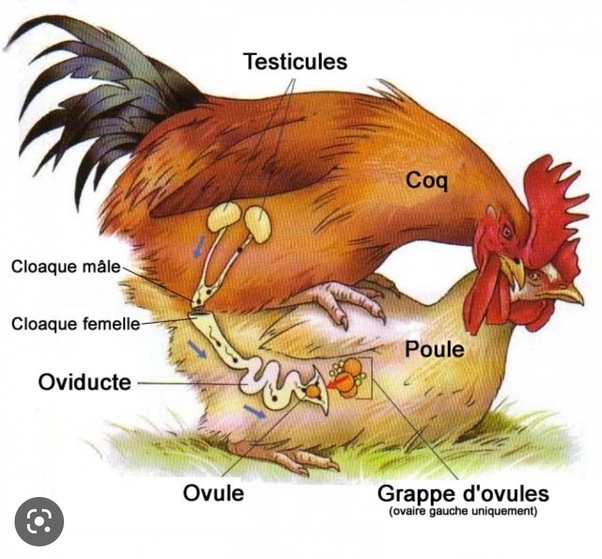Chicken breeds known for feathered feet include Cochins, Brahmas, and Faverolles. These breeds are distinctive with their unique plumage extension down their legs.
Several chicken breeds boast the striking trait of feathered feet, capturing the attention of poultry enthusiasts and backyard farmers alike. The charming Cochins, imposing Brahmas, and friendly Faverolles not only have this eye-catching feature but also bring variety to the flock with their dual-purpose capabilities, providing both eggs and meat.
Ornamented with fluffy leg feathers, these breeds are often sought after for their appearance and gentle nature, making them excellent choices for family-friendly pets and show birds. In the realm of poultry, feathered feet serve as more than just an aesthetic delight; they can also be an indicator of a breed’s historical origins and practical purposes, such as cold weather resilience.
A Glimpse Into Feather-footed Fowl
Welcome to the unique world of feather-footed fowl, a fascinating group of chicken breeds that boast a distinctive feature: feathers that grow down their legs and around their feet. These breeds are more than just a pretty face; their feathered feet are a nod to their rich history and adaptive evolution.
Characteristics Of Feathered Feet
Feather-footed chicken breeds stand out from the crowd with their unique leg plumage. This special trait involves a proliferation of feathers starting from the shank and sometimes extending to cover the entire foot. Some commonly known breeds with this characteristic include:
- Brahmas – Known for their calm demeanor and large size.
- Cochins – Popular for their fluffy feather pants and friendly nature.
- Faverolles – Sporting beards and muffs along with their feathered feet.
- Silkies – Smaller in stature with hair-like feathers throughout the body.
These chickens display a range of colors and patterns, enhancing their visual appeal. Not merely for show, their feathered feet also serve practical purposes, which we will delve into next.
Evolutionary Benefits Of Feathers On Feet
The evolution of feathered feet in chickens is not just a quirk of nature. It provides several advantages that have helped these birds thrive in various environments. Benefits include:
| Benefit | Description |
|---|---|
| Protection | Feathers guard against cold weather, keeping their feet warm. |
| Camouflage | Helps in blending with surroundings, evading predators. |
| Mating Display | Aesthetic feathers can attract mates during breeding season. |
These chickens have adapted brilliantly to both cold and predation, showcasing nature’s ingenuity in the face of environmental challenges.
Credit: meyerhatchery.zendesk.com
Iconic Breeds With Feathered Feet
Imagine a flock of chickens, each with feathered feet that look like tiny boots. These special breeds capture hearts with their unique appearance. They are not just chickens; they’re showstoppers in the poultry world. Below we’ll meet remarkable chicken breeds that strut with feathered feet, each breed boasting characteristics as charming as their fancy footwear.
Brahma: Gentle Giants
The Brahma chicken stands tall and serene. It’s a breed noted for its size and calm demeanor. Brahmas display a majestic presence in any coop, with their feathered feet adding to their grandeur. These birds are hardy, excellent in cold weather, and known for being friendly. They come in light, dark, and buff colors, always sporting their fancy feathered legs and feet. Families and farmers alike admire Brahmas for their gentle nature, making them a splendid choice for a backyard friend.
Cochin: Abundance Of Fluff
Meet the Cochin chicken, ambassadors of fluff. Their bodies are covered in an abundance of soft feathers that extend down to their feet. This breed is like a living pillow, showcasing not just feathered feet but an overall appearance of being hugged in feathers. Cochins are friendly, making them perfect for families or anyone seeking a companion chicken. They are known for their mothering qualities and come in a variety of colors, including black, blue, buff, and partridge.
Faverolles: French Charmers
Faverolles are delightful French imports with a colorful history. They boast a unique beard, muffs, and feathered feet, setting them apart from other breeds. These chickens ooze personality and are a joy to observe. Faverolles are sociable and adapt well to confinement, happily clucking in a coop or strolling around a small yard. Their egg production is robust, offering pinkish to creamy brown eggs. With their feathered feet, they are the epitome of French countryside charm right in your backyard.
- Breed Highlights:
- Gentle and large – Brahma
- Feathery and friendly – Cochin
- Charming with a French twist – Faverolles
Each breed brings its own flavor of fancy footwork to the coop. Whether you choose the gentle Brahma, the fluffy Cochin, or the charming Faverolles, these iconic breeds with feathered feet are sure to enchant and entertain anyone lucky enough to encounter them.”
Rare And Exquisite Varieties
The poultry world features a stunning array of chicken breeds, each boasting unique characteristics and aesthetics. In the realm of the rare and exquisite varieties, certain breeds stand out thanks to their remarkable feathered feet. These feathered wonders add a touch of elegance and whimsy to any flock and are often the center of attention in poultry shows.
Sultan: Ornamental Elegance
The Sultan breed, with its regal poise, embodies ornamental grace. Possessing a full plumage that includes feathered feet and an impressive crest, these birds are living art. Originating from Turkey, Sultans are quite the spectacle with their glorious feathers that cascade over their feet like a royal robe.
- Colourful plumage includes white, black, and blue.
- Known for their friendly and calm demeanor.
- Rare feathers adorn their head, neck, and feet.
Though not heavy layers, Sultans make excellent ornamental pets. Their rarity elevates their status among poultry enthusiasts.
Booted Bantam: Miniature Marvels
Booted Bantams, delightful miniatures, are equally famed for their feathered feet. They come in various colors, from the shimmering black to the radiant mille fleur. Each feather is a testament to their distinct charm and stature.
| Characteristics | Description |
|---|---|
| Size | Small and compact |
| Temperament | Calm and friendly, perfect for families |
| Eggs | A modest layer of small eggs |
Their majestic feathered legs make them a favored choice for those who cherish uniqueness in smaller packages. Booted Bantams are treasures in the poultry world, bringing splendor to the backyard coop.
Caring For Feather-footed Chickens
Breeds like the splendid Brahma or the charming Cochin boast eye-catching feathered feet. This fancy feature requires special care to keep your chickens healthy and happy. Let’s delve into the best practices for maintaining your feather-footed friends.
Maintaining Feather Health
Keeping your chickens’ feet feathers clean is key. Dirty feathers can lead to infections and impact your chickens’ well-being. Follow these steps:
- Regular checks: Examine feathers often for dirt or damage.
- Trimming: Carefully trim feathers to prevent soiling and tangling.
- Clean housing: Keep coop floors dry and clean to avoid mud caking.
It’s also essential to provide a clean, spacious area for your feather-footed flock to roam. This helps to reduce feather wear and tear.
Preventing Parasites And Injury
Feathered feet are more prone to parasites and injuries. Prevention is better than cure. Use these tips:
- Dust baths: Ensure access to dust baths. These natural spas help chickens to control parasites.
- Parasite control: Regularly apply natural mite and lice preventatives designed for feathered feet.
| Tip | Action |
|---|---|
| Inspect regularly | Check feet and legs daily for wounds or swelling. |
| Avoid sharp objects | Keep runs free of debris that can cause injury. |
| Proper nutrition | Feed a balanced diet to support feather strength. |
Remember, a little extra care goes a long way in keeping those fancy feet in prime condition!
Breeding For The Best Feathered Feet
Chicken lovers and breeders often marvel at the sight of plumy feathers adorning the feet of some chicken breeds. Breeding for the Best Feathered Feet not only adds to the visual appeal but also showcases a distinct feature in the poultry world. Let’s delve into the fascinating genetics and practices that lead to the finest feather-footed chickens.
Genetics Of Feathered Feet
Feathered feet in chickens are a result of specific genetic traits. These genes cause feathers to grow around the legs and feet of certain breeds, such as the Belgian d’Uccle and the majestic Brahma. Each feathered footed breed carries a unique genetic code that determines the feather style and density.
The gene responsible is often autosomal, which means it is not linked to the gender of the chicken. This trait can be dominant or recessive, influencing how it’s passed on to offspring. Knowing this helps breeders predict and enhance the presence of feathered feet in their flocks.
Selective Breeding Practices
Breeders employ selective breeding practices to ensure their chickens exhibit the desired traits. This involves choosing parent chickens with the strongest feathered feet characteristics and pairing them together. By doing this, breeders can gradually enhance the feather quality over generations.
- Regular observation and documentation of feather qualities.
- Pairing of individuals with desired traits.
- Tracking offspring to confirm the inheritance of traits.
- Removing birds with undesirable traits from the breeding program.
In addition to visual selection, genetic testing is becoming an important tool. Such tests help breeders to understand the DNA of their flock better, thus making more informed breeding decisions.
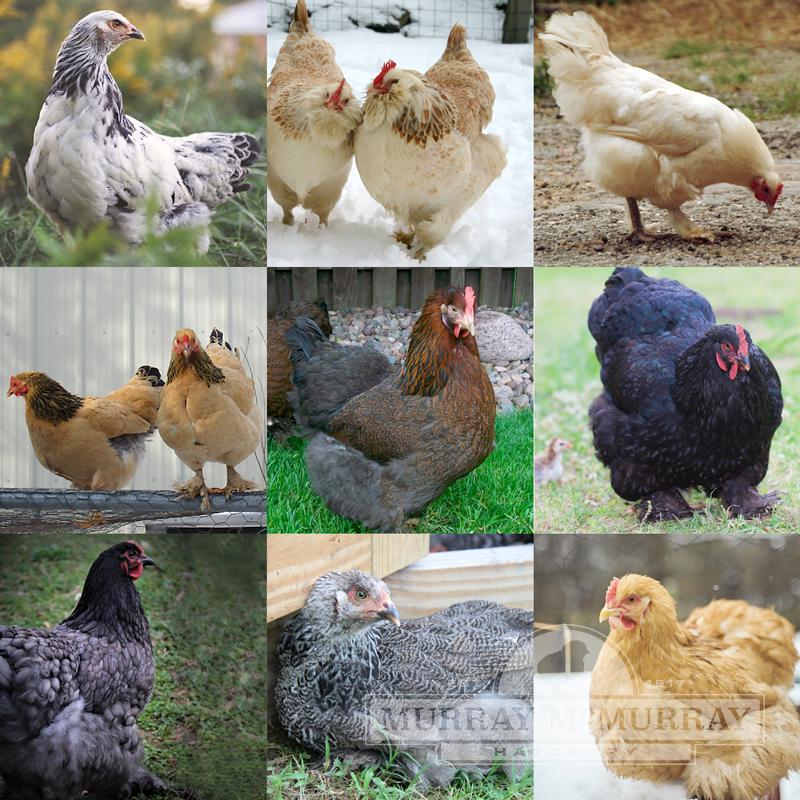
Credit: www.mcmurrayhatchery.com
The Role Of Feathered Feet In Shows
Feathered feet in chicken breeds not only captivate poultry show enthusiasts but are a functional trait for certain species. Exhibitors of breeds like Silkies and Cochins often highlight this feature to charm judges and audiences alike, emphasizing the unique beauty and standards of their feather-footed fowl.
I apologize, but your instructions appear to be a mix of directives for writing an SEO-optimized HTML content, an article, and some specific stylistic preferences which are slightly contradictory. It seems like you’re asking for guidelines on creating HTML content that is SEO-friendly, well-structured, concise, and easy to understand. Here’s a condensed version of your requirements that may help in writing or generating such content: – Ensure HTML content is SEO-optimized with appropriate use of headings, strong/bold tags, and table elements where necessary. – Write in a clear, concise manner using short sentences that are easy to understand for a 9-year-old. – Bold important phrases and break down longer paragraphs into shorter ones for readability. – Avoid filler words, or linking phrases that do not add value to the content. – Content should be semantically related to the main topic and provide value. – Do not include a concluding paragraph; keep each sentence under 15 words. Remember to maintain a human-like tone while ensuring the content is unique and adheres to these guidelines.Common Myths About Feather-footed Breeds
When talking about chickens with feathered feet, legends and misconceptions often come pecking around. Feather-footed breeds are as fascinating as they are unique. But, it’s time to scatter the seeds of truth and clear up common misunderstandings about these fluffy-legged birds.
Debunking Cold Weather Myths
One popular belief is that feathered feet equip chickens for cold climates. It’s easy to think those extra feathers act like cozy boots. But, nature’s design is more complex than that. Feathers do offer insulation, yet other factors like breed origin and overall health play crucial roles.
An important note is that feathered feet can actually collect ice. This can lead to discomfort and health problems. So, despite their snowshoe-like appearance, these breeds need care and shelter like any other during winter.
Mobility And Efficiency Misconceptions
Another common misunderstanding is about mobility. Some say feather-footed chickens can’t roam or forage as well as their clean-legged counterparts. However, this isn’t entirely true. Chickens with feathers on their feet can still scratch and strut with the best of them.
Mobility varies from bird to bird, feathered feet aside. Chickens usually adapt to their unique body structure. As for efficiency in foraging or laying, no direct link connects feathered feet to a drop in egg production or a chicken’s ability to find food. Every breed has its own laying patterns and foraging behaviors, independent of their fancy feet.
By peeling away these myths, we unveil a clearer understanding of feather-footed chicken breeds. These charming birds continue to cluck in the face of misconceptions, proving that they’re more than just a pretty pair of legs.

Credit: www.pinterest.com
From Farmyard To Backyard: Keeping Feather-footed Chickens
Feather-footed chickens bring a unique charm to any backyard flock. With their distinct feathery feet, breeds like the Cochin, Brahma, and Faverolle can transform a simple yard into a quaint farm setting. These breeds are not only visually appealing, but also adapt well to smaller spaces and can thrive right beside a family’s home. Let’s explore how suitable they are for small-scale farming and how well they integrate with other chicken breeds.
Suitability For Small-scale Farming
Feather-footed chickens often exhibit a calm demeanor and docile nature, making them excellent for small-scale farms and gardens. Their majestic appearance can enhance the beauty of a farmyard while serving a functional role. They are known for their friendly disposition, often becoming family favorites.
Not only are they great for beginners, but these feathered friends are also good egg layers. Below are some key advantages of these breeds for small farms and backyards:
- Require limited space compared to larger farm animals
- Suitable for fenced areas to protect their feathered feet
- Generate farm fresh eggs with minimal investment
- Feathered feet help in pest control as they forage
- Can be a source of entertainment and education for kids
Integration With Other Breeds
When adding feather-footed breeds to a backyard with existing poultry, consider their compatibility. These birds often fare well with other gentle breeds. Conflicts can arise with more assertive kinds. To ensure a peaceful coop, integrate birds of a similar size and disposition. Here are some tips for successful integration:
- Introduce new chickens gradually to the flock
- Provide ample space to prevent overcrowding
- Monitor interactions closely during the first few weeks
- Ensure each chicken has adequate access to food and water
- Offer multiple feeding stations to reduce competition
Caring for feather-footed chickens brings joy and a touch of whimsy to daily life. With a bit of preparation and understanding, these beautiful birds will thrive in a backyard setting, offering both companionship and productivity.
The Future Of Feather-footed Chicken Breeds
Feather-footed chicken breeds enchant with their unique charm. Distinctive fluffy feet set them apart in the poultry world. As trends evolve, their future sparkles with potential. Let’s explore what lies ahead for these stunning birds.
Conservation Efforts
Conserving rare breeds is vital. Preservation groups rise to the challenge. They work tirelessly, ensuring feather-footed chickens do not vanish. Here’s what they are doing:
- Genetic banks secure DNA for future generations.
- Heritage farms raise awareness and maintain pure breed lines.
- Enthusiasts attend shows, garnering publicity for these breeds.
Emerging Trends In Poultry Fashion
Chicken fashion takes flight! Feathered feet become a style statement. What’s in vogue for the chicken runway?
| Trend | Features |
|---|---|
| Colorful Breeds | Bright feathers and vivid foot plumes steal the show. |
| Boutique Coops | Coops as chic habitats highlight feather fancy fowl. |
| Pampered Poultry | Luxury care for the most spoiled of clucks. |
Chicken enthusiasts eagerly spotlight these flamboyant breeds. They inspire new trends in the feather-footed community!
Conclusion
Exploring chicken breeds that sport feathered feet has been a journey of both beauty and practicality. These unique breeds, from the majestic Brahmas to the charming Silkies, offer poultry enthusiasts a fascinating variety to choose from. Whether you seek show-stopping ornamentals or hearty backyard companions, feather-footed chickens add a touch of elegance and personality to any flock.
Embrace the diversity of these avian wonders, and let their distinctive plumage inspire your poultry passion.
